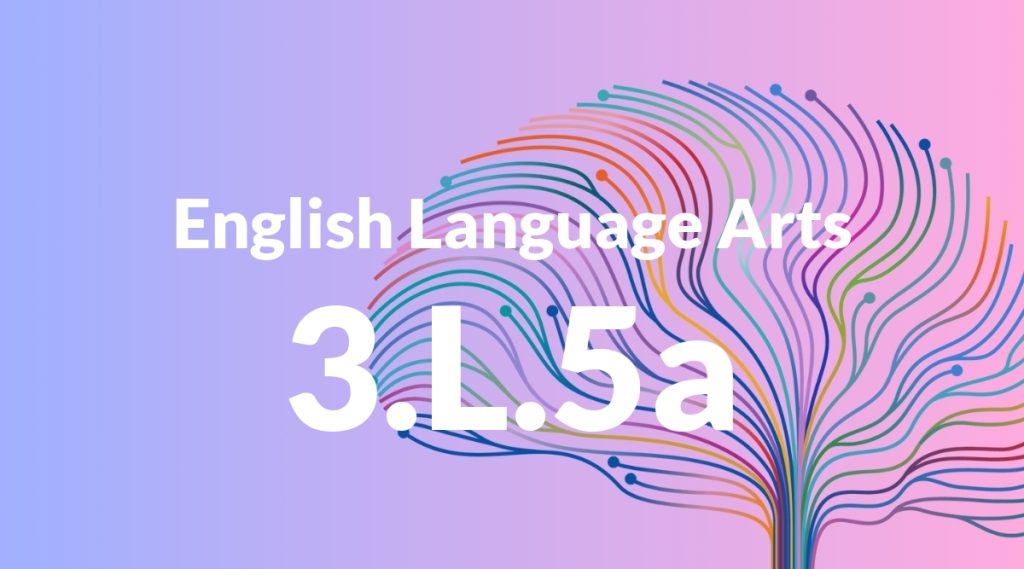Standard: 3.L.5 – Demonstrate understanding of figurative language, word relationships and nuances in word meanings.
Grade level: Grade 3
Subject: English Language Arts
Domain: Language
Teacher Overview
This standard emphasizes the importance of understanding figurative language, word relationships, and nuances in word meanings. It is crucial for developing students’ reading comprehension and expressive writing skills. Mastery of this standard will enable students to grasp deeper meanings in texts and use language more effectively. Students should know the difference between literal and figurative language and be familiar with basic grammar and sentence structure.
Students will develop the ability to analyze complex texts and enhance their writing with figurative language and nuanced word choices.
Common Misconception 1
Students may confuse literal and figurative language, thinking that phrases like ‘raining cats and dogs’ mean actual animals are falling from the sky.
Intervention 1
Use visual aids and concrete examples to illustrate the difference between literal and figurative language. Practice with sentences that clearly show both types.
Common Misconception 2
Students may believe that synonyms and antonyms are always interchangeable, not understanding that context determines the appropriateness of word choice.
Intervention 2
Provide context-specific examples and engage students in activities that highlight how different words can change the meaning of a sentence.
Prerequisite Knowledge
Students should have a basic understanding of literal language and simple word meanings. They should also be familiar with basic grammar and sentence structure.
Subsequent Knowledge
After mastering this standard, students will be able to analyze more complex texts, understand deeper meanings in literature, and enhance their own writing with figurative language and nuanced word choices.
Instructional Activities
- Read and discuss books and stories with rich figurative language.
- Create a figurative language wall with examples of metaphors, similes, and idioms.
- Play word games that focus on synonyms, antonyms, and word relationships.
- Write short stories or poems using figurative language.




